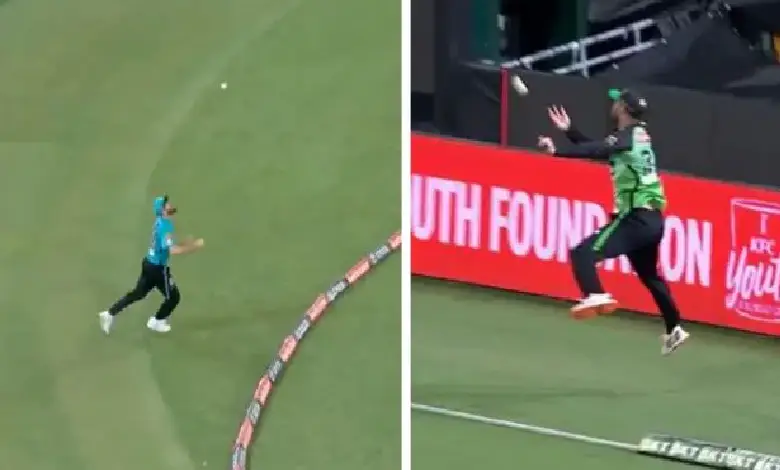
Mumbai : A major tweak to cricket’s boundary fielding rule has been announced by the Marylebone Cricket Club (MCC), the custodians of the laws of the game. The MCC has amended Law 19.5.2, tightening what is considered a legal airborne fielding effort near the boundary. The aim is to end confusion and limit catches involving multiple airborne touches or “bunny hops” outside the boundary, which fans and players increasingly viewed as unfair—even if technically legal.
The earlier version of Law 19.5.2 stated: A fielder who is not in contact with the ground is considered to be grounded beyond the boundary if his/her final contact with the ground, before his/her first contact with the ball, was not entirely within the boundary. The updated Law 19.5.2 brings major changes to how catches near the boundary are judged, particularly those involving airborne fielders or relay efforts. Here’s a detailed breakdown of the changes and how they’ll impact play.
Updated Law 19.5.2 brings major changes to how catches near the boundary are judged, particularly those involving airborne fielders or relay efforts. Here’s a detailed breakdown of the changes and how they’ll impact play. Previously, this rule only applied to the first fielder touching the ball. Under the new version, it applies to every fielder involved in the play — whether or not the ball has already been touched.
That means in a multi-fielder relay catch, all fielders must meet the same grounding conditions before they touch the ball. A fielder is still allowed to jump from outside the boundary and touch the ball once while airborne. However, after that first touch, every time they contact the ground, they must do so within the field of play. If they land or step outside the boundary during the rest of that play — even after completing the catch or throw — it will count as a boundary.
If a fielder jumps from outside the boundary and returns the ball into the field — either by throwing it to another fielder or tapping it back in — they must land inside the field and remain there until the play is over. If they step outside the boundary again during the same delivery, it’s ruled a boundary, regardless of the ball’s final outcome.
MCC has devised a new wording where the ‘bunny hop’ wholly beyond the boundary is removed, but these catches where the fielder pushes the ball up from inside the boundary, steps outside and then dives back in to catch the ball, are permitted, a note said. Our solution has been to limit any fielder who has gone outside the boundary to touching the ball while airborne only once, and then, having done so, to be wholly grounded within the boundary for the rest of the duration of that delivery.
Even if the ball is parried – to another fielder or inside the field of play – if the fielder lands outside the boundary, or subsequently steps outside, then a boundary will be scored. For clarity, that means the fielder gets one chance, and one chance only, to touch the ball having jumped from outside the boundary.




